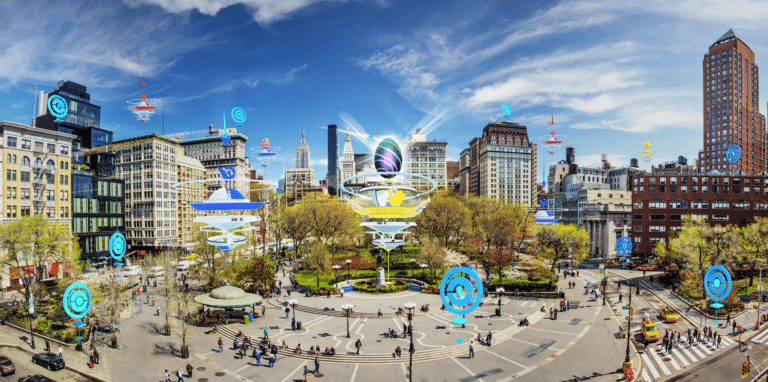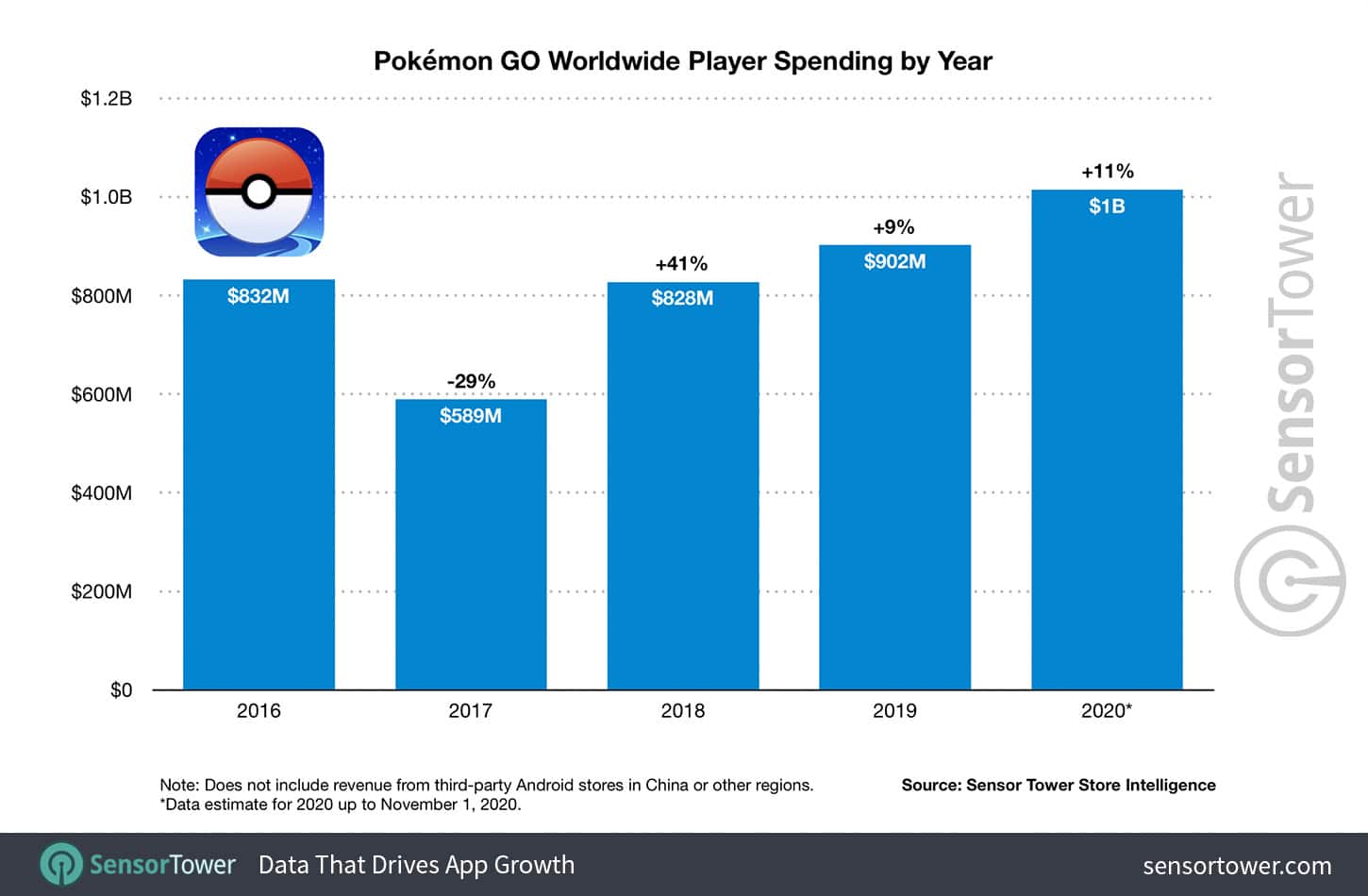
Though generalist tech press have mostly moved on to other shiny objects, Pokémon Go is at the height of its popularity and continues to break new records. The latest figures from Sensor Tower estimate that the game has passed $1 billion in 2020 year-to-date revenue.
This marks Pokémon Go’s most successful year on record, and it only measures up to November 1st. This puts the game on an annual run rate of $1.2 billion, which would be 33 percent year-over-year growth. This is notable considering an accelerated pace from its 2019 growth rate.
Part of that trendline (without the 2020 run-rate extrapolation) can be seen in Sensor Tower’s chart below. The game’s lifetime revenue is also notable, which Sensor Tower pegs at $4.2 billion. This follows the $3 billion mark that was hit exactly one year ago, as we examined at the time.
To be clear, this isn’t first-party data from Niantic, but Sensor Tower’s extrapolated figures (and our run-rate calculation). Sensor Tower is reputable and reliable in its network reach and sample sizes. And a consistent methodology over time enables longitudinal analysis for revenue pacing.

Lessons & Learnings
One of the remarkable things about Pokémon Go growth and its sustained play over four years, is that the above recent record-setting period in 2020 coincided with a pandemic. Indeed, global lockdowns and shelter-in-place orientation don’t inherently align with the game’s migratory play.
Here we’ll credit Niantic’s ingenuity to pivot quickly and adjust game mechanics to accommodate stationary at-home play — easier said than done from a UX perspective. The result: instead of usage declines, it was able to ride the wave of gaming’s broader COVID-era inflections.
This move fits the profile for Niantic and its ability to achieve $4.2 billion in lifetime revenue. Not only has it defied odds this year, but in a broader sense. It’s rare for mobile games to sustain active play for several years, due to challenges in maintaining novelty and challenge mechanics.
As we examined in a recent report, Niantic has accomplished this through timely in-game updates, well-devised game mechanics, and underlying design principles that shoot for the right targets. That includes product philosophies like using AR sparingly as a value-added feature.

Business Model Innovation
Beyond product innovation, Niantic’s revenue milestone likewise validates business-model innovation. In-app-purchases (IAP) are a fitting revenue structure, given the behavioral economics of microtransactions. In a broader sense, the model drives $70 billion annually in mobile gaming.
Not only is IAP validated in mobile gaming, but it’s fitting to AR’s early stage when users hesitate to pay upfront for apps. IAP is likewise supported by consumer survey data from our research arm ARtillery Intelligence (see chart above), and recent report on top AR business models.
ARtillery also projects mobile AR aggregate in-app-purchases. At $1.4 billion estimated for 2020, this aligns with Niantic’s $1.2 billion run rate as the sector’s dominant leader. If those projections sustain, aggregate in-app-purchases could approach $2 billion in 2021 (see chart above).
Stepping back, this is all worth watching as Niantic does the AR industry a favor through large-scale deployment. That can shine a light on key market dynamics and demand signals, which is valuable intelligence in early stages of any consumer technology.* We’ll keep tracking it closely.
*There’s debate over whether or not Pokemon GO, and thus its associated revenue, should be considered “AR.” We address those questions separately here.






